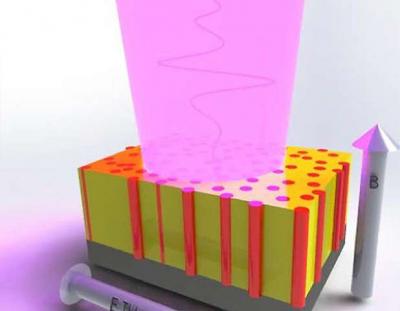scientists at the University of Warwick, Oxford University, University of Cambridge, Los Alamos National Laboratory and University at Buffalo in the U.S have found a colossal magnetoresistance at terahertz frequencies at room temperature in high-quality functional perovskite-based nanocomposites. This may find use in nanoelectronics and in THz optical components controlled by magnetic fields.

Electronics that can read and write data at terahertz frequency, rather than at a few gigahertz, can lead to faster performance. Creating such devices would be aided by the use of materials that can undergo a huge change in how easily they conduct electricity in response to a magnetic field at room temperature. Scientists believe thin films of perovskite oxides hold promise for such uses, but such behavior has until now never been seen at these frequencies in these films.
Different from conventional colossal magnetoresistance observed at high magnetic fields and low temperatures, this newly developed colossal magnetoresistance at terahertz frequencies can be seen at room temperature and intermediate magnetic fields. The team studied the underlying physical mechanisms with terahertz time-domain magnetospectroscopy. Researchers can use these results to guide the future development of novel functional thin films with better performance.

